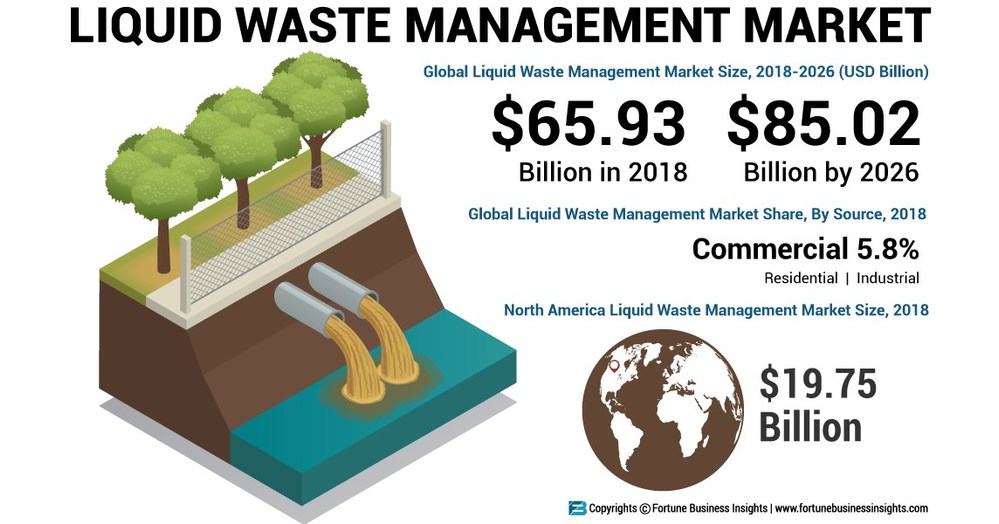Reclaim Waste - An Overview
Reclaim Waste - An Overview
Blog Article
Unknown Facts About Reclaim Waste
Table of ContentsSee This Report on Reclaim WasteThe 5-Second Trick For Reclaim WasteIndicators on Reclaim Waste You Need To KnowAll about Reclaim WasteReclaim Waste for Dummies
Discover the types, occurrences, and kinds of fluid waste. Domestic sewage waste describes the waste and items from a property sewage-disposal tank. This kind of waste is developed by humans in residences, schools, and other structures. This only consists of sewage-disposal tanks that have a drainpipe area. The appropriate monitoring and disposal of domestic sewage waste need fluid waste to be transferred to a sewer treatment plant where the proper techniques and equipment are related to detoxify and dispose of waste.
Business waste often consists of potential dangers, such as flammable products or a combination of liquid and strong waste items, and calls for a more innovative and comprehensive disposal process. The disposal of business waste usually includes the filtration of waste prior to transport to ensure secure and correct disposal. Industrial waste is developed from results and drainage of industrial procedures and production.
This sort of waste can not make use of the same sewer monitoring transport or procedures as septic or commercial liquids. The hazardous waste management procedure requires the examination and screening of fluid waste prior to it undertakes the disposal process (industrial wastewater treatment). Drainage waste is the fluid waste that comes from runoff and excess stormwater in highly inhabited locations or cities
Runoff waste can cause contamination and flooding if not managed appropriately. Guaranteeing appropriate waste monitoring can avoid calamities and minimize ecological injury.
Top Guidelines Of Reclaim Waste
Contact PROS Providers today to learn about our waste administration and disposal solutions and the proper means to care for the liquid waste you generate.
(https://padlet.com/leonaube33101/reclaim-waste-hw71hge954tsaxnp)This supposed 'wastewater' is not only a crucial source yet, after treatment, will be launched to our land, waterways or the sea. Made use of water from toilets, showers, baths, kitchen area sinks, laundries and industrial procedures is understood as wastewater.

water used to cool down machinery or clean plant and tools). Stormwater, a kind of wastewater, is drainage that flows from farming and city areas such as roof coverings, parks, gardens, roadways, paths and rain gutters into stormwater drains pipes, after rainfall. Stormwater flows without treatment directly to local creeks or rivers, eventually reaching the ocean.
What Does Reclaim Waste Do?
In Queensland, most wastewater is dealt with at sewer therapy plants. Wastewater is delivered from domestic or industrial sites through a system of sewage systems and pump stations, referred to as sewerage reticulation, to a sewer therapy plant. Neighborhood federal governments develop, keep and run most sewage treatment plants. Operators are certified under the Environmental Management Act 1994 to discharge cured wastewater at an appropriate ecological criterion right into rivers.
The Department of Natural Resources recommends city governments regarding handling, operating and maintaining sewage systems and treatment plants. In unsewered areas, regional governments may need householders to install private or family sewage therapy systems to treat domestic wastewater from commodes, kitchen areas, restrooms and washings. The Department of Natural Resources authorises making use of household systems when they are proven to be reliable.
A lot click here now of stormwater gets no therapy. In some brand-new class, therapy of some stormwater to eliminate trash, sand and crushed rock has started using gross pollutant catches. Wastewater therapy occurs in four phases: Removes solid matter. Larger solids, such as plastics and various other items wrongly discharged to sewers, are gotten rid of when wastewater is travelled through displays.
Makes use of little living microorganisms knows as micro-organisms to damage down and get rid of continuing to be liquified wastes and fine fragments. Micro-organisms and wastes are included in the sludge.
Some Ideas on Reclaim Waste You Should Know
Nutrient removal is not offered at all sewage therapy plants since it requires expensive specialised tools. Clear liquid effluent created after treatment might still have disease-causing micro-organisms - liquid waste disposal melbourne.

The majority of wastewater streams into the sewage system. Under the Act, local federal governments provide authorizations and licences for ecologically relevant tasks (ERAs) involving wastewater launches that might have a neighborhood impact.
Getting My Reclaim Waste To Work
Otherwise, examples are considered lab evaluation. Often several tests are needed to establish the degrees of each of the various contaminants such as oils, heavy metals and chemicals in water. Tracking supplies valid info regarding water quality and can verify that licence conditions are being satisfied. The details acquired via monitoring offers the basis for making water top quality decisions.
Report this page